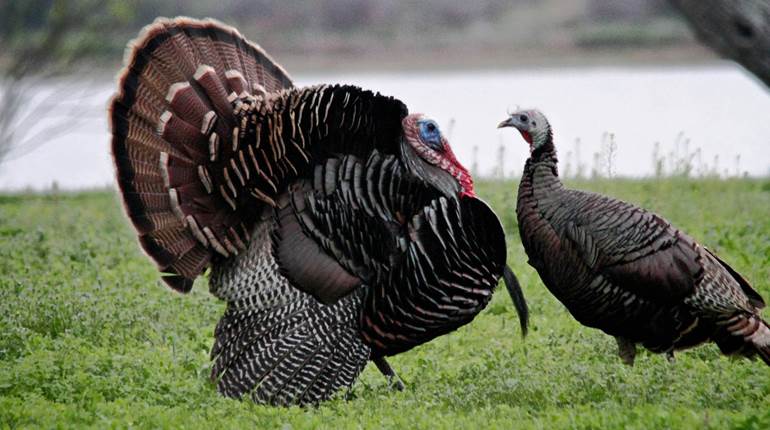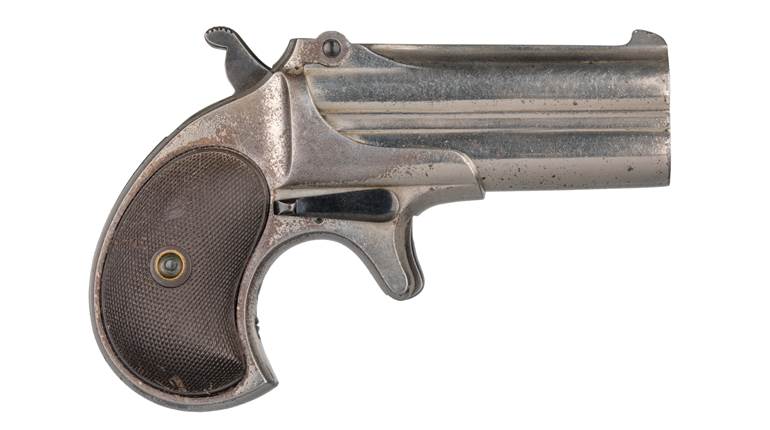
After the United States saved the world from Hirohito and Hitler, there was no doubt that America was the leader in industrialization. From automobiles and airplanes to locomotives and firearms, the moniker of “Made in the USA” was the benchmark of design, craftsmanship, production and distribution. But business being business meant that one should not let any grass grow beneath the feet. It was time to cut production costs drastically.
The push toward more cost-effective production had been occurring even before World War II. Remington, which had some solid, if not spectacular, success with its Model 30 bolt-action rifle had already ditched it for the short-lived Model 720 rifle beginning in 1940.
Remington had contracts to produce the Pattern 14-M1917 Enfield rifle throughout World War I. Two of its plants-Ilion and Eddystone-had tooled up for the war effort. When those contracts expired at the end of the war, Remington dove back into the sporting rifle market. The company jettisoned the “ears” that served to protect the rear sight on the 1917 along with machining the receiver bridge to the same diameter as the receiver ring to produce a rifle that would capture the hearts of America’s burgeoning hunting population. Another improvement was straightening the floorplate to provide a sleeker profile, though it cost the magazine a round in capacity-from six to five rounds. The Model 30 retained the dog-leg bolt handle and the cock-on-closing bolt feature, along with the pronounced rocking-chair-like safety. In 1932, more changes were made including switching to a free-floating barrel and a cock-on-opening bolt that was preferred by most Americans. A single-stage trigger replaced the old military two-staged trigger.
Pressure from those who saw a need to tool up for war initiated another review of cost-cutting improvements in the Model 30. Design engineers Oliver H. Loomis and A.L. Lowe were tasked to lead the project. In 1940, when the switch was made to the Model 720, the rifle was further trimmed into a sleeker package, but because of the breakout of World War II production was halted with only some 4,000 rifles produced. Calibers included .30-06, .270 Win. and .257 Roberts. A variation of the Model 720 was the 720R featuring a 20-inch carbine barrel. In 1942, the Navy received 1,022 Model 720 rifles, but none were ever issued to any sailors or marines. Some 22 years later many of these rifles were awarded as marksmanship trophies to Navy and Marine competitive shooters. Most of the WWII production was geared toward M1903 Springfield rifles but when the war was won it was time to build sporting rifles.
In 1947, the most radical changes were made for Remington’s top-of-the-line sporter. The large, side-saddle extractor, a la the Model 98 Mauser and 1917 Enfield, was replaced by a “C”-shaped piece of spring metal with a tab at the center of the arc. This was inserted into a groove on the face of the bolt. Also, a spring-loaded blade ejector within another groove machined into the bolt was replaced by a round, spring-loaded ejector on the face of the bolt. The Model 721-and later the short-action 722-became the first of the so-called modern Mausers. Caliber choices for the Model 721 were .30-06 and .270 Win. When it was introduced to the public in 1948, it carried a retail price of $79.95. The following June, Remington introduced the Model 721 for big-game hunters chambered in .300 H&H Mag., sporting a 26-inch barrel.
As the 1960s brought even more pressure to cut manufacturing costs, Remington faced a double-edged dilemma. The Models 721/722 rifles were somewhat popular and very reliable, but compared to the competition they were homely in appearance. Mike Walker was a lead design engineer at Remington, and it was his team that brought about many of the changes in the production of the 721/722 rifle. Walker, who was also a dedicated benchrest shooter, employed some of the characteristics of the Model 40X benchrest rifle into a new design that also sought to offer aesthetic embellishments for which shooters asked. In 1962, Remington offered the Model 700 and included a totally new chambering, the 7 mm Rem. Mag.
The Remington 700 had a much nicer checkered walnut stock, a streamlined tang, and a swept-back and checkered bolt handle, along with a more stylish trigger guard. A handsome rifle in a new and powerful chambering was all it took to launch the most popular bolt-action rifle of all time. The 700 was easier and less expensive to build than the Mauser 98-based competition’s rifles, yet it retained the good looks of the competition. Its receiver was made from round bar stock instead of an expensive forging. The bolt was made in three pieces and brazed together. From the 40X target rifle the 700 incorporated a faster lock time of 3.2 milliseconds. The single-stage trigger felt more like a target rifle, and the tighter manufacturing tolerances for the barrel yielded a rifle that on average was more accurate than the competition.
During its 54-year manufacturing life, the Remington 700 has been chambered in more than 35 cartridges ranging from the .17 Rem. to the .458 Win. Mag. It is widely reputed to be the most accurate factory bolt-action rifle, though several of today’s modern iterations of bolt-actions might challenge that statement. Nonetheless, for years it earned that accuracy crown. Besides hunting rifles, the Model 700 has morphed into ultra-long-range varmint and sniper rifles, target rifles, an ultra-light mountain rifle, as well as several special-purpose rifles. It is one of the most copied designs by other gunmakers.
The U.S. Marine Corps-an organization not normally associated with embracing new technology until it has been well-vetted on the battlefield-quickly adopted the Remington 700 as its M40 sniper rifle chambered in 7.62 NATO in 1966 during the Vietnam War. The army followed suit in 1988, christening it the M24 SWS (Sniper Weapon System). In the law enforcement community, it is estimated that more than 90 percent of LE sharpshooter rifles are built on the Remington 700 receiver.
Its history is garnered in success after success story, with precious few demerits, though there had been some controversy with the original Walker-designed fire-control system. Under some very obtuse and created conditions the rifle would fire without the trigger being pulled. To avoid costly and ongoing litigation Remington changed the design of its trigger to a new X-MARK Pro trigger in 2007.
My own experience with this rifle spans over three decades and includes the Remington 700 Classic in .223 Rem. that has a more-or-less permanent home on my 4-wheeler to a number of 700s in calibers ranging from 7 mm Rem. Ultra Mag (RUM) to the .338 RUM. I have taken animals from prairie dogs to deer, pronghorn, caribou and a couple of moose with 700s. I have yet to have any failure with a 700, including a .300 RUM that was covered in goose guano and mud with which I laid low a musk ox a few years ago.
When it comes to a bolt-action center-fire rifle-be it for hunting, varminting, sniping or anything else-you can’t go wrong with a Model 700. It’s as simple as that.





































